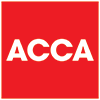Your VAT Direct Debit…
As part of the Treasury’s Coronavirus support for businesses, it was possible to defer VAT payments due between 20th March and the 30th June. There were some points to consider:
- There was no need to warn HMRC that you weren’t able to pay your VAT.
- The Return had to be submitted as due.
- Any deferred liability must be paid on or before 31st March 2021.
We know many businesses took advantage of the opportunity to defer this payment, but now it’s time to make sure you don’t fall foul of it!
The payment window ends on the 30th June, and from 1st July normal service is resumed.
This means there are some important steps to take:
STEP 1 – Reinstate your Direct Debit.
Set up a new Direct Debit to ensure HMRC can claim your VAT as due.
You can do that by logging on to your VAT online account. This needs to be done at least three working days before your payment is due to be made, or payment will not be claimed in time.
STEP 2 – Include the deferred payment in your cashflow forecasts.
This is really important as we come out of lockdown, and start to trade again. It would be very easy to lose sight of the amount that was deferred!
Given the risk of a ‘second spike’, being really aware of the deferred VAT as well as the start date for the repayments for CBILS or BBLS loans is going to be key to planning.
Find out more about cash flow forecasting and tracking in our Rebound Resources.
STEP 2 – If you can’t pay your next VAT bill.
If you’re unable to pay any VAT due and need additional time to pay, be sure to contact HMRC before the payment is due. This will reduce the risk of having to pay a default surcharge in addition to interest. This is the page on Gov.uk to visit for all the details of how to make a payment arrangement.
If you’re able to offer a suggested payment plan, including an initial and immediate payment it is likely to be looked on favourably.
HMRC have guidance that required them to be receptive to Coronavirus as justification for missing some tax obligations, such as filing dates and payments. You need though to communicate with them to explain how you’ve been affected and to have realistic expectations.
As an example, if you are unable to pay the full VAT liability because you have had unexpected expenses to trade in line with social distancing and the new guidelines, this should be justifiable in asking for an arrangement.
If you disagree with any decision by HMRC since February 2020, to take account of the impact of the pandemic, you have an extra three months to appeal that decision.
STEP 3 – If you would like to bring down any deferred liability.
You can make ad hoc payments or additional overpayments with your VAT returns to reduce the amount outstanding from the deferral, if you wish to do so.
If you’d like any help or advice regarding the above, as ever, please get in touch.
Business News
We send regular updates that keep clients aware of changes and suggestions on a wide range of subjects; if you’d like to receive those too, just add your details below and we’ll do the rest! We promise not to bombard you and you can unsubscribe at any time.


